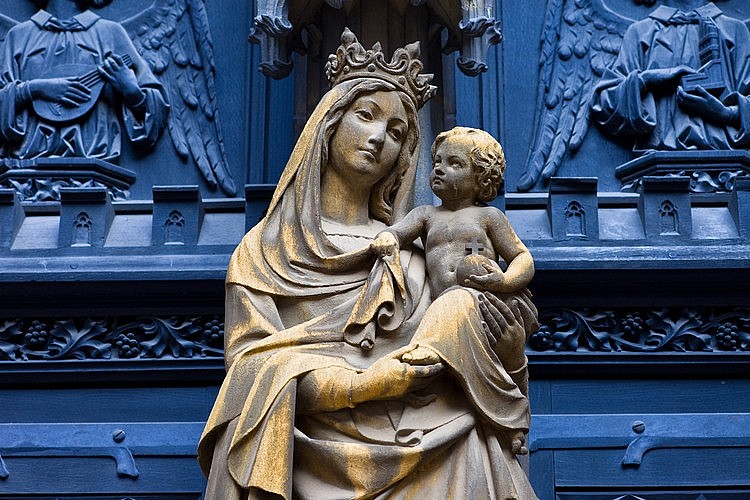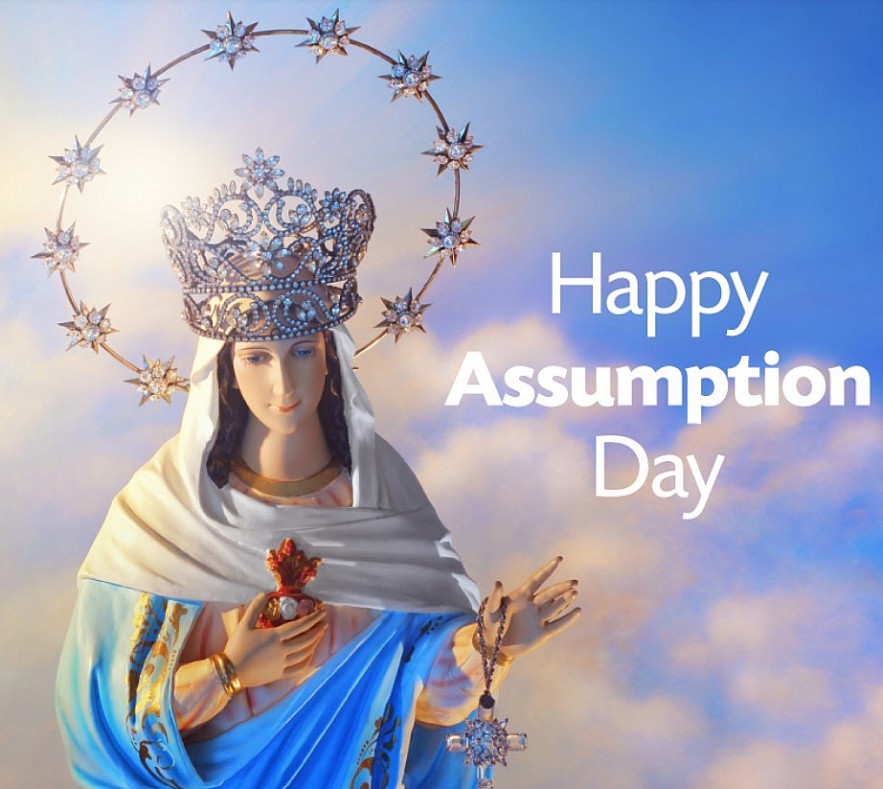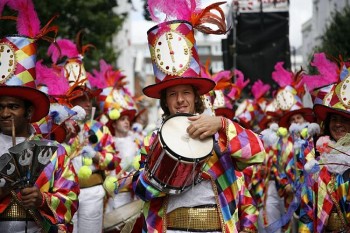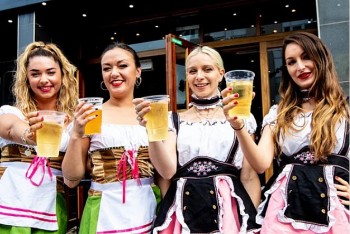Assumption Day Around the World: Date, Meaning, History and Celebration
Where is Assumption Day Celebrated?
In many places, like parts of Europe and South America, Assumption Day is celebrated on or around August 15. The Assumption of the Blessed Virgin Mary, the Dormition of the Most Holy Mother of God, or the Feast of the Assumption are some other names for it.
Video: Assumption Day around the World
Learn more: August 2024 UK Calendar: Special Days, Full List of National Holidays and International Events
When is the Assumption of Mary?
Every year on August 15, people celebrate the holiday.
In the Catholic faith, the Feast of the Assumption of Mary is a very important day. In some parts of Europe, it is even called the "Easter of the summer."
It is the main feast day for the Blessed Virgin Mary, who was the mother of Jesus Christ. It is also called the "Dormition of the Virgin Mary."
In places like Spain and Italy, it's the start of the summer break, when lots of people leave the cities to go on vacation to the coast or the hills. Around the world, people call it the "Feast of Our Lady of the Harvest" because of the date on the calendar.
.
 |
| The feast day of the Assumption of Mary commemorates the Virgin Mary's assumption into heaven |
Meaning/Background of Assumption Day
Some countries, like Austria, Belgium, Chile, Croatia, France, parts of Germany, Guatemala, Greece, Italy, Poland, Portugal, Slovenia, Spain, and Switzerland, celebrate Assumption Day as a public holiday. In Switzerland, the holiday may only be for certain groups or in certain regions. Other than Australia, Canada, the UK, and the US, Assumption Day is not a public holiday in those places.
On Assumption Day, people remember the belief that when Mary, the mother of Jesus Christ, died, her body did not break down like other bodies do. Instead, it was "assumed" into heaven, where her soul was reunited with her body. This holiday has been around since the fourth century CE. It comes from a pagan harvest festival that became Christianized, and in many parts of Europe it is called the Feast of Our Lady of the Harvest.
Myth says that the goddess Isis of the Sea was born on this day, and celebrations have been held in her honor for hundreds of years. As Christianity spread, church leaders thought that the best way to deal with this pagan ritual would be to turn it into a Christian holiday. This is how Assumption Day came to be.
Just like the Immaculate Conception, the Assumption wasn't always a Roman Catholic Church dogma. It wasn't until 1950 that Pope Pius XII made it so. But some Orthodox Christians and some Anglicans believe it because it is the right thing to do. People think of it as the most important feast day for the Virgin Mary.
Symbols of Assumption Day
In Italy, the ancient holiday is remembered with nighttime bonfires and public lighting, which are likely both symbols of the Sun. In some cultures, people throw coins from their windows down to the street to show that they want to be rich.
People have linked the day to images of the Virgin Mary and her ascension into heaven. Most people think of the Virgin Mary when they see the color blue. The color of the sky, which stands for heaven, is a sign of truth and clarity. The Virgin Mary is linked to the lily, which is a sign of chastity, purity, and simplicity.
How to Celebrate Assumption Day
 |
| Happy Assumption of Mary |
Italy celebrates the Feast of the Assumption with colorful processions through the streets and fireworks shows, just like Italian-American communities across the United States. In rural areas outside of Rome and Sicily, the most important thing to happen that day is a bowing procession. A statue of the Virgin Mary is carried through the town to a flower arch used for ceremonies. There, people hold a statue of Christ and wait for her to arrive. Three times, both statues are tilted toward each other. After that, the figure of Christ leads the figure of Mary back to the parish church for a special blessing.
"Our Lady of the Navigators" is the name of the holiday in Sao Paulo and other southern Brazilian cities. Pageants happen on decorated canoes with a captain, a purser, three musicians, and two rowers on each boat. They go to small villages to have fun and eat. There may be small church processions in towns with musicians dressed and acting like the "Three Wise Men" from the Bible.
Some Italian plazas were flooded in the past. People would ride in carriages through the temporary "lakes," and it was common for people to carry bowls of rose-scented water that they would sprinkle on themselves. This may have come from a pagan ritual in which people asked the gods to give the crops enough rain, or it could have been a way to honor the pagan goddess Isis of the Sea. France also has a big holiday on August 15th. Since 1638, the Virgin Mary has been the country's patron saint.
History of the Assumption of Mary
Mary's departure from this life and her body being taken up into heaven are both remembered on this feast.
Assumption is the official teaching of the Church. It says that Mary was taken into heaven, body and soul, at the end of her life on earth.
The Christian holy books don't talk about Mary's death, also called "Dormition." Hippolytus of Thebes, who wrote in the 7th or 8th century and whose work has only been partially preserved, says that Mary lived for 11 years after Jesus died.
The idea that the Virgin Mary died in a state of spiritual peace and without pain is called "dormition." While this belief isn't based on the Bible, it is supported by Orthodox Christian Holy Tradition. Some old writings called "Apocryphal" say it happened, but neither the Orthodox Church nor other Christians believe these to be inspired by the Bible.
Some people think that Mary "ascended" into heaven, but the Bible says that is not true. Jesus Christ rose from the dead and went to heaven on his own. But God "assumed" Mary and took her to heaven.
The Feast of the Assumption is a public holiday in some countries and a holy day of obligation for Catholics. Devotees see it as the "heavenly birthday" of the Holy Mother and not a day to mourn her death, but a day to celebrate her union with her beloved son.
At the Council of Chalcedon in 451, St. John of Damascus says that the Roman Emperor Marcian asked for the body of Mary, Mother of God.
As Bishop of Jerusalem, St. Juvenal told the emperor, "that Mary died in front of all the Apostles, but that her tomb was found empty when it was opened at St. Thomas's request." The Apostles thought that the body had been taken to heaven, the saint wrote.
In 1950, Pope Pius Xll said that Mary "was taken body and soul into the glory of heaven after the end of her earthly life." It was against the rules for her body to rot or stay in a tomb. Some cities say they own her temporary tomb, though.
In the early years of Christianity, the relics of saints and people who died for their faith were very valuable and carefully guarded. A lot of cities say they have the bodies of saints, both well-known and less well-known. But there are no records of anyone honoring Mary's body anywhere.
Because it's a religious holiday, the Assumption is usually celebrated by going to mass, where the Virgin Mary is usually the subject of the sermon. Catholics have to go to Mass today because it is a Holy Day of Obligation.
In Conclusion
In many places, like parts of Europe and South America, Assumption Day is celebrated on or around August 15.
Some people believe that when Mary, the mother of Jesus Christ, died, her body was "assumed" into heaven to be reunited with her soul. This means that her body did not naturally break down after death.
A lot of places, like Austria, Belgium, Chile, Croatia, France, parts of Germany, Guatemala, Greece, Italy, Poland, Portugal, Slovenia, Spain, and Switzerland, have public holidays on January 8. But people in Australia, Canada, the UK, the US, and other places also celebrate it, even though it's not a public holiday. People celebrate with parades, shows, pageants, and fireworks, but each region has its own way of doing things.
The holiday has been around since the fourth century C.E. and has many names, such as the Assumption of the Blessed Virgin Mary, the Dormition of the Most Holy Mother of God, and the Feast of the Assumption.
 October 2024 UK Calendar: Special Days, Full List of National Holidays and International Events October 2024 UK Calendar: Special Days, Full List of National Holidays and International Events As we step into October 2024, the UK is gearing up for a month brimming with national holidays, significant observations, and international events. Whether you’re ... |
 November 2024 UK Calendar: Special Days, Full List of National Holidays and International Events November 2024 UK Calendar: Special Days, Full List of National Holidays and International Events In the UK, November is a month marked by a mix of cultural traditions, commemorations, and preparations for the upcoming festive season. Here are the ... |
 Full List of U.K 2024 Bank Holiday Dates Full List of U.K 2024 Bank Holiday Dates Are you looking to visit the UK in 2024, or are you just curious about the dates and meanings of the bank holidays? In that ... |
 Summer Bank Holiday (August) in United Kingdom: Date, Meaning, Tradition/History and Celebrations Summer Bank Holiday (August) in United Kingdom: Date, Meaning, Tradition/History and Celebrations The United Kingdom has a public holiday called the August Bank Holiday. It is a statutory bank holiday. In the past, the holiday fell on ... |


























